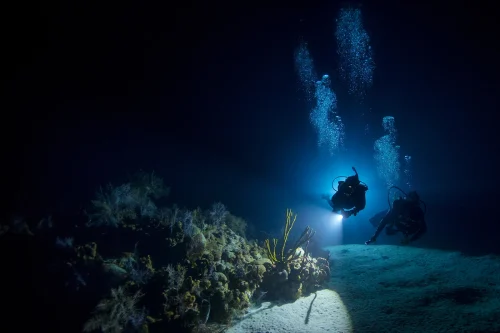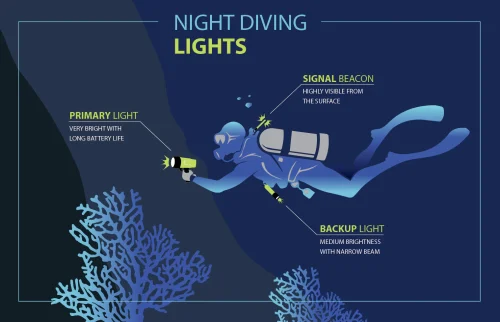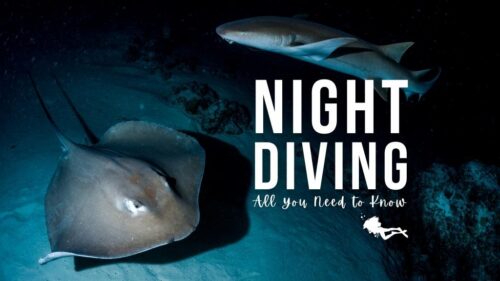Night Diving: When the Reef Awakens
Imagine hovering in warm water, the sun has set, and your world shrinks to the beam of your dive light. Within that beam, a whole new universe reveals itself. This is the magic of night diving—one of the most fascinating elective dives in the Advanced Open Water course.
The reef you know by day completely transforms after sunset. This Amadive article will be your guiding light, helping you understand the preparation, safety protocols, and wonders that await you in the dark.

1. What Makes Night Diving So Special?
- A Whole New Cast of Characters: As the daytime fish go to sleep, the “residents” of the night become active. You’ll have the chance to see octopuses and squid hunting, lobsters crawling out of their crevices, and various crabs foraging for food.
- Corals in Bloom: Many types of hard corals extend their polyps to feed on floating plankton, looking like a vibrant field of flowers under your light.
- Vivid Colors: Since you are the sole light source, your dive torch brings out the true, vibrant colors of the corals and marine life—colors that are often muted by the water during the day.
- A Meditative Experience: The focus on your beam of light creates a sense of peace, tranquility, and a deeper connection with your surroundings.
2. Specialized Equipment for Night Diving

Safety is the top priority, and you’ll need a few specialized items:
- Primary Dive Light: A powerful, reliable dive light is mandatory.
- Backup Dive Light: Always carry a smaller, secondary light. In the unlikely event your primary light fails, your backup will allow you to end the dive safely.
- Marker Light: A chemical light stick or a small LED light attached to your and your buddy’s tank valve, making it easy to spot each other in the dark.
3. Night Diving Safety and Techniques

- Planning: Always dive a site you are already familiar with from the daytime. Plan your entry and exit points while it’s still light out.
- Light Communication: You will learn special hand signals using your dive light. For example, drawing a large circle means “OK,” and waving the light quickly back and forth means “Attention/Problem.”
- Maintaining Buddy Contact: Stay close and always keep an eye on your buddy’s marker light.
- Excellent Buoyancy Control: Your buoyancy skills (PPB) are even more crucial at night to avoid bumping into things you can’t see clearly.
- Respect Marine Life: Avoid shining your light directly into creatures’ eyes. Illuminate them gently from the side to observe them.
>>> Read More: Night Dive Safety
Conclusion
Night diving is not as intimidating as many think. With the proper training from the AOW course, it can be one of the most memorable and magical diving experiences of your life. You will see a completely different side of the ocean, one that is full of life and mystery.
➡️ Ready for another adventure? Let’s explore history beneath the sea with the: Wreck Adventure Dive
